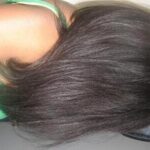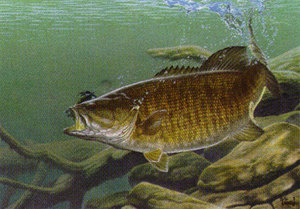Taking care of black hair is no easy task. As most black people know, our hair is not managed as easy as other textures of hair. Many black women are now abandoning the perm and straightening systems and now going back to their roots by growing their natural hair.
When a black woman spends her entire life straightening and perming her hair, she can feel completely lost when and if she decides to go natural. I know because that is how I felt when I decided to chop off my perm and start anew. I began searching for easy and healthy ways to grow and manage my natural hair. I found that there are several ways to keep a beautiful head of hair naturally when I read No Lye by Tulani Kinard. This book is an African-American guide to natural hair care. I found great tips that I would love to share with others who are thinking about going natural or perking up their own natural styles.
I am going to start with locking and twisting your hair. Kinard didn’t start her book at this point, however, I would like to start here because I have found that this is one of the healthiest ways to grow African-American hair. Locks have the ability to be beautiful, unique, and regal. I cannot help but to notice that other races of people have adopted this hairstyle also.
I find it intriguing that locking your hair can say much about your personality. People how grow locks are very patient and committed. Unlike most styles that can be achieved by a long day at the beauty shop, locks can take several years to reach a good length. I have personally been growing my locks for almost 2 years and they still haven’t reached my goal length, however, my hair has grown dramatically during this time.
So what exactly are locks? Everyone has probably seen them at some point in their life. Many people know of the famous reggae singer Bob Marley or actress Whoopi Goldberg. Kinard describes locks as the process of no longer combing or brushing your hair. Every strand that would otherwise come out from a normal grooming regimen, along with shedding and breakage, starts to become intertwined, meshing, spiraling, coiling, and locking together, drawing into a cylinder formation that becomes “locked.”
Locking is irreversible; it is a permanent hairstyle commitment. Let’s say that a woman has been growing her locks for 4 years and she finally decides to give up the hairstyle. She will not be able to go to a beautician and have her hair changed into a different style. She will actually have to have her entire head shaved and start the hair growing process all over again.
That is why it is so important for people, especially women to really be at a point in their life where they are either willing to stay committed to their locks or they won’t mind being bald when they are ready for a change. I personally haven’t locked my hair completely yet. I am not ready for that commitment, however, my hair is twisted and I have the ability to take my hair down if I desire. I do not want to officially lock my hair until I know that I am ready.
I found it fascinating that locks have been around for thousands of years. Our rich African history, as far back as 3500B.C.E. in Ancient Egypt, which was called Khemet at the time, is filled with artifacts that prove that Locks were “in.” Priests, royalty, and common folks wore locks. Kinard adds in some Biblical references to her findings of historic locks. The Israelites who followed a specific spiritual path in which they dedicated themselves to God wore locks. One of their practices was described in Numbers, 6:5: “All the days of the vow of his separation shall no razor come upon his head…and shall let the locks of his hair of his head grow.”
Kinard also describes that the Yoruba people in Nigeria declared that any child born with hair that locked automatically had spiritual prominence. Rastafarians are perhaps the best-known religious hair lockers. They consider their hair to be sacred and they keep it covered in public.
When a person decides to lock or twist their hair all they need is a comb, hair clips, spray bottle, gel, moisturizing oil, towel for covering clothing, and a mirror. With these items you can be on your way to beautifying your hair, natural style.
Note: Many people may want to use bee’s wax in order to lock their hair. However, this is not the best product to use. Your locks will be held together but it will be very hard to wash and cleanse your hair. Your locks will become dull and will have the ability of holding dirt particles.
The best option to starting your locks would be to have a professional start and maintain them. However, there aren’t any specific rules to starting your locks. If you feel comfortable starting them yourself than feel free to, however, hair that is done by a professional will have a better quality in the end.
Kinard describes three easy techniques to starting your locks: palm rolling, braiding, and two-stranded twists. She also gives complete details on how to use these simple techniques that I will be more than happy to share with you.
Palm Rolling: For this technique you will need at least three inches of natural hair for palm rolling. Your hair texture can be soft, medium, or coarse, and your curl pattern should be more springy, medium-to-tight curl for this technique to retain its shape and form. Start at the base of the neck and take a small section of hair. Part your hair into a horizontally slanted row. Make equal, small section parts on the row. They may be little on each section. Place the section of hair in the crevice that is at the base of your fingers, just above the palm of your left hand. Take your right hand, and place the base of your palm in the middle of the crevice of the left hand, where your fingers begin, and roll the right hand down the left hand palm until the fingertips of the right hand come down to the base of the left palm.
Now twist the lock around with your fingertips in a clockwise direction, lay it down against the scalp, and place a clip on it to hold it in place. Proceed to the nest section. You can now work your way up through the back of your head up to the top. You will want to keep a spray bottle of water handy to keep your hair moist during this process.
Braiding: African-American’s commonly use this technique when they want to start the locking process. You can start your locks by determining their size. This is the size that you will start braiding each individual section of your hair. Make equal sections all over your entire head. Your sections can be diamond, squares, pyramids, or circles. Apply a small amount of gel to each section. Using an underhanded stitch, braid each section to the very end. Do not leave anything unbraided. Upon completion, you can set your hair in rollers. Styling it in this way will help keep your braids intact. It will take about six-months for the locking process to be on its way, as long as you properly groom, shampoo, and condition your hair. If your hair begins to fray, you can use the palm rolling technique to pull in any loose hairs and continue the locking process.
Two-Stranded Twists: This is the style that I am currently wearing. This technique follows the same format as braiding, except that when you part off the hair in sections, instead of making three new sections from that, you only make two. Apply a small amount of gel, and begin crossing each strand section over the other until you’ve worked your way down to the end of the twist. Toward the end of the twist, approximately two inches from it separate the two sections into three and braid it out to finish it off.
A Special Note: I have found that the best gel to use for locking or twisting your hair would be Organic Root Stimulator Lock and Twist Gel. This gel holds your locks great while moistening your hair. Another advantage to this gel is that it does not flake, so you will not have white particles throughout your hair. This gel truly works wonders. You can purchase this product along with other Organic Root Stimulator Products at most beauty supply stores.
Products that you might want to avoid placing in your locked hair would be petroleum-based products such as hair grease and Vaseline. These products tend to be extremely difficult to wash out of your hair and they coat the hair cuticle, preventing it from opening during any cleansing regimen. These products are very heavy and will clog the pores in the scalp, inhibit natural flaking and cleansing, and cause the sebaceous glands to eventually malfunction. You will definitely begin to have a huge dandruff problem.
Things that you should place on your hair would be herbal and fruit rinses because they have the ability to naturally strengthen the hair. Most of the oils that work well in locked hair can be found in most health food stores. You can mix your own oils by placing about 2 tablespoons of the dried herb into a glass or stainless steel pot of boiling water. Cover and remove from the heat. Let the mixture steep for an hour. Make sure the mixture is not hot; room temperature is good. Strain off the herbs, and use the infused water as the last rinse after a shampoo and deep conditioning system.
Here is a list of herbs that Kinard has included in her book:
Rosemary- this herb will stimulate circulation, solve scalp problems, and is good for dandruff.
Rosehip-emollient, good for damaged hair.
Sage-strengthens hair and has astringent and antibacterial properties.
Chamomile-brightens and highlights, provides sheen.
Horsetail-stimulates growth, helps reduce dandruff.
Nettle- retards baldness, antiseptic, good for dandruff.
Fruit Rinses also work wonders on locked and natural hair. I have actually tried the banana rinse and my hair became extremely moistened and it also smelled really good.
You can make your own fruit rinses by mixing one part fruit juice to three parts water. Let them sit in the hair twenty minutes and then rinse out thoroughly.
Banana Rinse- An excellent emollient, highly natural lubricant and hair conditioner; beneficial to the hair and scalp because it binds with water to hold in moisture.
Coconut Milk- A natural emollient with great conditioning proteins. Helps to reduce the loss of moisture and soften and smooth the hair.
Lemon Rinse- Refreshing astringent, stimulates the scalp, dissolves sebum buildup.
Apple Cider Vinegar- Retards dandruff and provides sheen to hair.
Kinard also gives a wonderful list of scalp oils that will work best on locked hair.
Rosemary Oil-Stimulates growth, antiseptic, good for dandruff, excellent for shine on dark-colored hair
Sage Oil-Astringent stimulates growth, kills bacteria; it is said to have the ability to darken graying hair.
Jojoba Oil-Smooths and conditions curly hair, good for dry scalp.
Sweet Almond Oil- Contains Vitamin E and F, good for itchy scalp, mild and easily absorbed.
Avocado oil-Rich in potassium and sulfur, Vitamins A, D, and E, easily absorbed.
Evening Primrose Oil/Birch Oil- Anti-dandruff, effective in treating inflamed scalps.
Calendula Oil- Light and astringent. Extracted from the marigold flower, it soothes scalp and eczema problems.
I hope that, God-willing, this advice from Tulani Kinard’s book No Lye will help you be on your way to growing your hair naturally and beautiful.
Reference:
- NO LYE by Tulani Kinard



